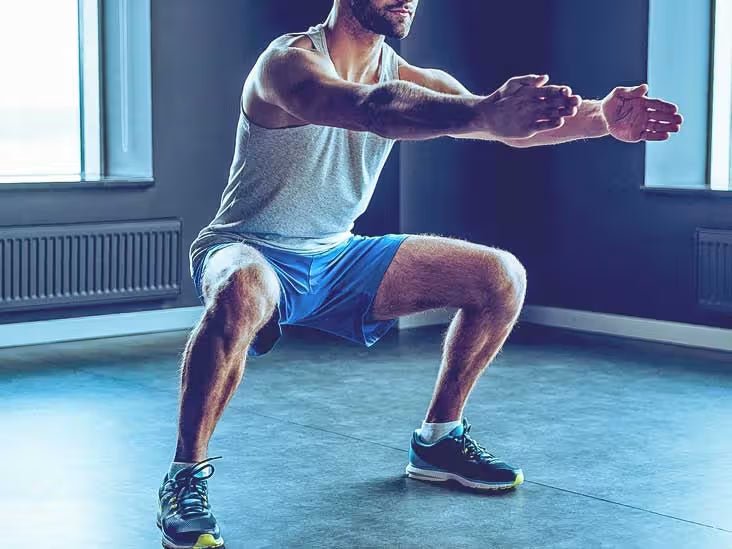
Best Low-Impact Exercises for Joint Health and Injury Prevention
Share
Maintaining joint health is essential for long-term mobility and overall well-being. Joint pain and injuries can significantly impact daily activities, making even the simplest tasks more challenging. Fortunately, there are several low-impact exercises that can help improve joint health, prevent injury, and boost overall fitness. In this article, we’ll explore the best low-impact exercises for joint health and injury prevention, and how these exercises can benefit people of all ages and fitness levels.
Understanding Low-Impact Exercises
Low-impact exercises are those that put minimal stress on the joints. These exercises avoid repetitive pounding or high-intensity movements that could lead to joint strain or injury. Instead, they focus on gentle movements that promote flexibility, strengthen muscles, and improve endurance without compromising joint health. While high-impact activities like running or jumping can be tough on the knees, hips, and back, low-impact exercises provide a safer alternative, especially for individuals with existing joint issues or those recovering from injuries.
1. Swimming
Swimming is one of the best low-impact exercises for joint health. The buoyancy of the water reduces the amount of pressure on the joints, making it an excellent choice for individuals with arthritis, joint pain, or those recovering from surgery. Swimming helps to improve cardiovascular health, build muscular strength, and enhance flexibility. The resistance of the water provides a full-body workout that engages multiple muscle groups without putting strain on the joints.
Additionally, swimming movements like breaststroke, backstroke, and freestyle can improve joint range of motion, particularly in the shoulders, hips, and knees. It’s also a great way to improve coordination and balance, which can further help prevent injuries.
2. Cycling
Cycling, whether on a stationary bike or out on the road, is another excellent low-impact exercise for joint health. The circular motion of pedaling ensures that the joints, especially the knees and hips, are not subjected to jarring movements. Cycling strengthens the muscles surrounding the joints, which helps to protect them from wear and tear. Additionally, cycling improves joint mobility by keeping the muscles and tendons active and flexible.
For individuals with knee pain, cycling is particularly beneficial because it helps maintain or improve knee range of motion without excessive pressure on the joint. As a weight-bearing exercise, cycling also contributes to bone health, which is crucial for preventing conditions like osteoporosis.
3. Yoga
Yoga is a low-impact exercise that focuses on flexibility, strength, and mindfulness. It involves slow, controlled movements that help improve joint flexibility and mobility while minimizing stress on the joints. Many yoga poses focus on stretching and strengthening key muscle groups that support the joints, particularly the hips, knees, and back.
For example, poses like downward-facing dog, child’s pose, and warrior pose stretch and strengthen the muscles surrounding the knees, hips, and spine, which can help reduce the risk of joint injuries. Yoga is also beneficial for improving balance, coordination, and posture, all of which play a role in injury prevention.
One of the best aspects of yoga is that it can be easily modified to suit individuals of all fitness levels. Whether you're a beginner or an advanced practitioner, there are yoga styles and poses that can help improve joint health and enhance overall mobility.
4. Pilates
Pilates is another low-impact exercise that focuses on strengthening the core muscles while improving flexibility and joint mobility. The exercises in Pilates are designed to engage and strengthen muscles, particularly the muscles that support the spine, hips, and knees. By improving core strength, Pilates helps enhance stability, which reduces the risk of injury during everyday activities.
Pilates movements also focus on alignment and posture, which is essential for joint health. Proper alignment helps to distribute weight evenly across the joints, reducing strain and pressure on specific areas. Pilates exercises often involve controlled, fluid movements, which are gentle on the joints while still providing a challenging workout for the muscles.
5. Walking
Walking is one of the simplest and most accessible low-impact exercises for joint health. It’s a weight-bearing activity, which means it helps maintain bone density and joint health without excessive strain on the joints. Regular walking strengthens the muscles around the knees, hips, and ankles, which helps protect the joints from injury.
Walking at a moderate pace for at least 30 minutes a day has been shown to improve joint function and reduce symptoms of conditions like osteoarthritis. It also helps to improve circulation, which can aid in the delivery of nutrients to the joints and reduce stiffness. For individuals with joint pain or those recovering from injury, walking on softer surfaces like grass or a treadmill may be gentler on the joints.
6. Resistance Training (with Light Weights or Bands)
Resistance training doesn’t have to involve heavy lifting to be effective. Using light weights or resistance bands can provide a low-impact way to strengthen the muscles around the joints. Strong muscles are essential for joint protection because they help absorb shock and reduce stress on the joints.
Focus on controlled movements and proper form when performing resistance exercises to avoid unnecessary strain on the joints. Exercises like squats, lunges, and leg lifts can strengthen the muscles in the legs and hips, which helps support the knees and lower back. For the upper body, resistance training can target the shoulders, arms, and back to improve overall strength and stability.
Resistance band exercises are especially beneficial because they allow for gentle, controlled movements while still providing resistance. They can be used for full-body workouts or to target specific muscle groups, such as the hips, knees, and shoulders.
7. Tai Chi
Tai Chi is a gentle form of martial art that emphasizes slow, controlled movements and deep breathing. It’s known for improving balance, flexibility, and overall joint health. Tai Chi movements are smooth and flowing, which helps reduce impact on the joints while still providing a full-body workout.
The slow, deliberate motions of Tai Chi can improve joint mobility and flexibility, particularly in the hips, knees, and ankles. The focus on balance and coordination also helps prevent falls, which can be especially important for older adults or those recovering from injuries. Tai Chi is suitable for people of all ages and fitness levels, making it a great option for individuals looking to improve joint health and prevent injury.
8. Rowing
Rowing is a low-impact cardiovascular exercise that provides a full-body workout while minimizing stress on the joints. It strengthens the muscles in the back, arms, legs, and core, which helps to support the joints and improve posture. Rowing can be done on a rowing machine or on the water, making it a versatile exercise option.
The smooth, rhythmic motion of rowing allows you to get an effective workout without placing excessive strain on the knees, hips, or lower back. It’s an excellent choice for people with joint pain or those recovering from injury because it strengthens muscles while providing cardiovascular benefits.
Conclusion
Maintaining joint health is crucial for long-term mobility and injury prevention. Low-impact exercises like swimming, cycling, yoga, Pilates, and walking provide an excellent way to improve joint strength, flexibility, and overall function without causing undue stress on the joints. These exercises help strengthen the muscles that support the joints, increase flexibility, and improve balance, all of which contribute to better joint health and a reduced risk of injury.
Incorporating low-impact exercises into your fitness routine can be especially beneficial if you’re recovering from an injury, managing a chronic condition like arthritis, or simply want to protect your joints as you age. By choosing exercises that are gentle on the joints but still effective, you can enjoy improved mobility and better joint health for years to come.
Remember, it’s always important to listen to your body and consult with a healthcare professional before starting any new exercise program, especially if you have existing joint issues or concerns.
